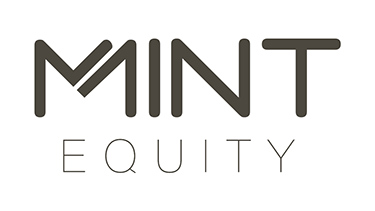At first glance, the First Home Super Saver Scheme could seem like a government play to appear as though they are tackling housing affordability issues, but when you dig a little deeper, there is certainly some merit to the approach.
Whilst the scheme doesn’t suit everyone, some first home buyers who are struggling to boost their deposit funds and are great with living on a tight budget, can utilise the feature to squirrel away a little more cash for their first home.
What is the First Home Super Saver Scheme (FHSSS)?
Apart from having a tricky name to get your mouth around, the FHSSS allows eligible Australians to access superannuation contributions for the purpose of buying their first home.
The real benefit is being able to set up a salary sacrifice arrangement with your employer to make superannuation contributions (before tax) into a super fund, which you can later access to help fund your deposit. This in turn reduces your PAYG tax on your remaining wages, as a concessional contribution is made before the tax is taken.
Alternatively, you can make tax-deductible super contributions or non-concessional (after-tax) contributions to your super account under the FHSSS.
Generally speaking, most first home buyers utilise some of your net salary (after tax) as savings towards the property.
How much can I contribute into my super for the FHSSS?
Now, that doesn’t mean all your superannuation that you have can be used, so let’s look at the technicalities. The maximum a person can contribute each year under the FHSSS is $15,000, with a total of $30,000 under the FHSSS. So, if you have a partner also contributing on the FHSSS, you have the opportunity to utilise $60,000 using the scheme.
Your salary tax bracket is important
Under the FHSSS, you can make before-tax contributions or after-tax contributions to your super account.
If FHSSS contributions are made using a salary sacrifice arrangement or as tax-deductible super contributions, the contribution is made from pre-tax earnings, which means the super fund will levy a 15% contributions tax on the super contributions.
For many people, this 15% tax rate on the concessional (before-tax) super contributions will be lower than the normal marginal tax rate they pay on their taxable income. With the marginal tax rate at 32.5% for the average Australian wage of $84,032 per year, only paying 15% tax on income that you’ll use for a deposit can be worthwhile.
However, Australians earning lower incomes, and paying the lowest tax rates, need to consider if saving for their deposit using super is right for them. Always remember to allow for the Medicare Levy and to consult with your accountant or financial adviser before making a salary sacrifice arrangement.
Are you eligible?
You can start making super contributions from any age, but you can't withdraw the super savings under the First home super saver (FHSS) scheme until you are 18 years old. You’ll also need to meet a few other requirements;
have never owned property in Australia
have not previously requested the Commissioner to issue a FHSS release authority in relation to the scheme.
Eligibility is assessed on an individual basis. This means that couples, siblings or friends can combine their eligible FHSS contributions to purchase the same property. If any of you have previously owned a home, it will not stop anyone else who is eligible from applying.
How to release your savings
When you are ready to receive your FHSS savings, you need to apply to the Commissioner of Taxation for a FHSS determination and a release. You can apply online using your myGov account linked to the ATO.
Before you request a release of your savings, you should:
check that you have made all of the voluntary FHSS contributions you want to make
make sure that you agree with the amounts shown in the FHSS determination. If not, you need to resolve any issues through the ATO standard review processes for determinations before you apply for a release.
What happens next?
Once your savings have been released, you have up to 12 months to you to sign a contract to purchase or construct a home.
The contract you enter into has to be a residential property. However, if you have or intend to purchase a vacant block of land to build a home on, it is the contract to construct your home that must be entered into within the 12 months (or an extended period) after the release of amounts to you.
Keep in mind, you could not have purchased the vacant land before the commencement of the FHSS scheme or before requesting a FHSS determination as you would not be eligible to request a determination as you would already hold real property in Australia.
You must genuinely intend to occupy the property as a home, and demonstrate this by:
occupying or intending to occupy the property as soon as practicable after purchase
occupying or intending to occupy the property for at least six of the first 12 months from when it is practicable to occupy it.
More information
Schemes like the FHSSS can be complicated and there are many rules around what you can and can’t use the savings for. Before you consider utilising the scheme, contact the ATO and or your accountant to discuss your needs and situation. Further information can be found here;



